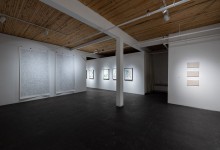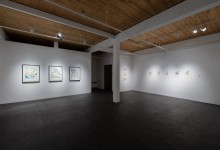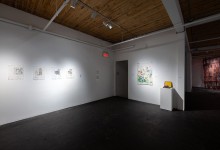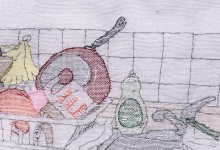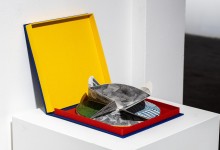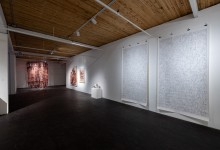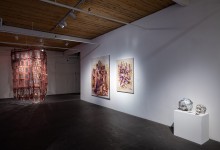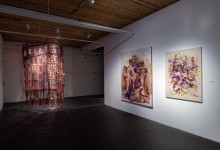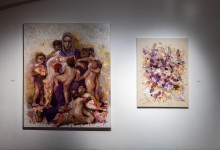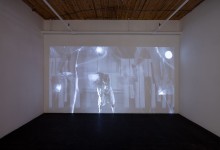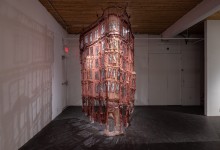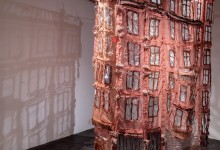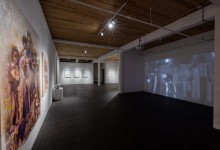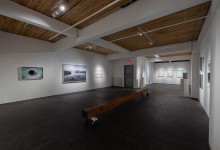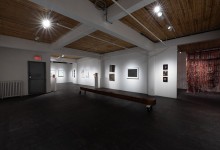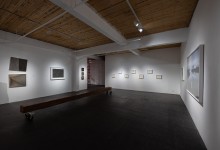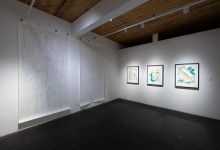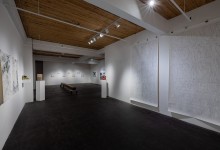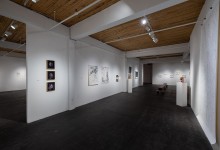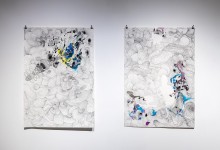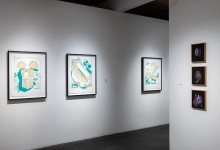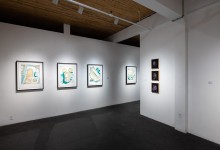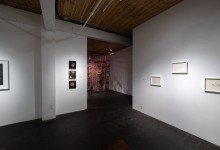Opening: Thursday, November 11, 2021 from 5:00 to 7:00 pm
Memory and Time: Sonny Assu, Lucie Bitunjac, Renato Garza Cervera, Jannick Deslauriers, Louis-Charles Dionne, Jessica Houston, Kando
Laïla Mestari, Elycia SFA, Jinny Yu
Curator : Noémie Chevalier
Text by Noémie Chevalier
An artist represents and revisits the memory on different supports. Therefore, each work selected for this exhibition is a guarantee of traces, that is to say a survival in the memory of a sensation, an impression, an idea and an experienced event. It also introduces questions about time, temporality and the organization of the visible.
In particular, Jannick Deslauriers’ life-size architectural structure Fantôme de l’Hôtel Queen is a reproduction from archival images of the façade of a historic Montreal building destroyed during the modernization of the downtown infrastructure. According to Deslauriers, the evanescent representation of buildings evokes history, but also survival. Architecture here reflects existence, it is a tangible trace of the past. Also, the artist Elycia SFA realized images of her daily life during the lockdown linked to the Covid-19 pandemic. With her loom she produced the series entitled Home Life / Still Life. Like Jannick Deslauriers, Elycia SFA’s textile becomes a material archive of memory representation. Similarly, Louis-Charles Dionne’s Manila Legal File Folders appears as a hybrid between the legal folder and the stone tablet, combining an ancient and contemporary form of an official document. This installation questions what is archived, thus left behind.
Sonny Assu in his Landlines series expresses a personal nostalgia through the maritime maps he kept from his grandfather. By making room for water and deconstructing the territory, the artist questions the invasion of indigenous lands and the displacement of several generations on Canadian territory. Whether through drawings or painted drums, he is committed to restoring the narrative that remains of his ancestors, in order to preserve the memory of his Ligwilda’xw / Kwakwaka’wakw community of the We Wai Kai Nation in British Columbia. In Mareas Humanas, Renato Garza Cervera explores the idea of “me” and “others” through the sole representation of the element: i. These compositions are reminiscent of the geopolitics of migration, plunging us again and again into this perpetual crisis of borders.
Jessica Houston, in her most recent production, asked the contribution of several authors to address letters to the future. These letters were buried in an Antarctic glacier to provoke a reflection on our present and the possibilities of our future. The photograph Letters to the Future – Antarctica, 3019, anticipates the circumstances of this discovery in 1000 years. Just as memory is a building block, the past is also a fantasy. With her Codex, Lucie Bitunjac reinvents this collection of drawings and notes in the manner of the great masters of art history. In her works, the artist develops a form of utopia while also tending to immerse us in a dystopian universe.
Finally, the works of the three artists Kando, Laïla Mestari and Jinny Yu propose a constant dialogue on the exploration of identity hybridity and the examination of being divided between two worlds. In Monama, Kando reinterprets Christian iconography, painting a full-length portrait of a black woman, accompanied by several children. Kando was raised in the Democratic Republic of Congo, growing up in a patriarchal polygamous family. This is why he questions through his works the correlation between maternal relationships, the determining role of transmission and gender inequalities. As for Laïla Mestari, she left Morocco as a child and in her video Comet Families, she represents the notion of intergenerational memory within her family immigration process. Jinny Yu was born in South Korea and lives in Canada. She considers the act of painting as a way to understand her position in the world. Her research has led her to try to think through what it means for her to be living as a recent settler on Indigenous land and question the sense of belonging.
Memory is a fundamental notion in the field of visual arts. Situation of an event staged by the artist or a reconstitution of a memory, the artwork then becomes a new subject of investigation.


